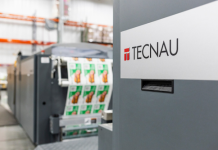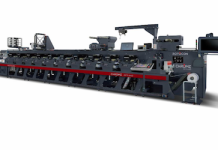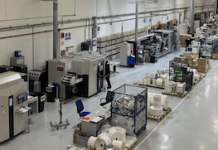According to Laurel Brunner of the Verdigris Project, many hundreds of thousands of books are published every year around the world. Supply chains are complicated and entrenched, but it’s essentially a local business. And yet, despite the fact that prints runs for works of fiction can be as low as 1000 copies, digital printing has yet to disrupt traditional supply chains.
Improving the carbon footprint of a company is always a work in progress, no matter the size of the business. It’s the same for people. And its the same for supply chains, but that perhaps is the hardest work-in-progress of all because it involves so many vested interests and habits, as well as patterns of work that are hard to reshape.
Digital presses are widely used in book production, but the spread of printing on demand for readers is limited, even for titles first published as e-books. Publishers produce for inventory, rather than produce for demand, despite the risk of high rates of returns and waste.
Why? A digital press can produce a title on demand, even personalise it, before it gets sent to an end user or a book shop. As a rule, this doesn’t happen. Instead books are printed and bound and then shipped to warehouses which then send them on to bookshops to be sold at random to the general public, or to publishers to send out to authors and reviewers. Why don’t printers undertake production and fulfilment in toto?
Current book supply chains are complicated, slow, mature and ripe for collapse. A broader version of the on-demand model would not only cut costs and fulfilment complexities from the supply chain. It would also go a long way to cutting emissions associated with waste, transport, warehousing, general management overheads and especially returns. Booksellers would be able to reduce capital tied up in inventories too, and tailor what they stock even more closely to local interests. They could take more risks.
Such massive upheaval to established business models requires publishers to work more closely with printing companies, taking more responsibility for production and fulfilment. Publishers would need a new approach to sales and marketing, one not based on advance sales and inventories but one based on reader expectations, with more scope for risk. These considerable difficulties might explain the apparent absence of efforts to revamp book supply chains. It’s a monumental task, and one publishers are understandably reluctant to undertake, despite considerable potential benefits.
The graphics industry is awash with companies who could help, especially the digital press cohort. HP has already set up a project called Piazza. Piazza links publishers and printers located close to end users to deliver titles printed on-demand. Pearson is an early adopter in the UK, but not all publishers will want to put themselves in the hands of a single platform controlled by HP. Major publishers such as Hachette or Penguin Random House could develop their own platforms and create scope for all manner of new business opportunities. Trade publishing’s environmental impact would fall dramatically too.
This article was produced by the Verdigris Project, an industry initiative intended to raise awareness of print’s positive environmental impact. Verdigris is supported by: Agfa Graphics (www.Agfa.com), Digital Dots (www.digitaldots.org), EFI (www.efi.com), FESPA (www.fespa.com), Fujifilm (www.fujifilm.com/sustainability/), HP (www.hp.com), Kodak (www.Kodak.com/go/sustainability), Practical Publishing (www.practicalpublishing.co.za), Ricoh (www.ricoh.com), Unity Publishing (http://unity-publishing.co.uk) and Xeikon (www.xeikon.com).
This work by the Verdigris Project is licenced under a Creative Commons attribution-noderivs 3.0 Unported licence http://creativecommons.org/licences/by-nd/3.0/
To submit your news please, contact journo@practicalpublishing.co.za
Read the top 5 stories weekly on WhatsApp or sign up to our newsletter.
THE VERDIGRIS PROJECT http://verdigrisproject.com/





















